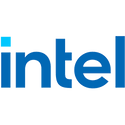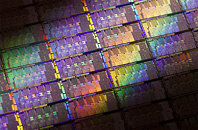Monday, January 31st 2011

Intel Identifies Sandy Bridge Chipset Design Error, All Shipments Stopped
As part of ongoing quality assurance, Intel Corporation has discovered a design issue in a recently released support chip, the Intel 6 Series, code-named Cougar Point, and has implemented a silicon fix. In some cases, the Serial-ATA (SATA) ports within the chipsets may degrade over time, potentially impacting the performance or functionality of SATA-linked devices such as hard disk drives and DVD-drives. The chipset is utilized in PCs with Intel's latest Second Generation Intel Core processors, code-named Sandy Bridge. Intel has stopped shipment of the affected support chip from its factories. Intel has corrected the design issue, and has begun manufacturing a new version of the support chip which will resolve the issue. The Sandy Bridge microprocessor is unaffected and no other products are affected by this issue.The company expects to begin delivering the updated version of the chipset to customers in late February and expects full volume recovery in April. Intel stands behind its products and is committed to product quality. For computer makers and other Intel customers that have bought potentially affected chipsets or systems, Intel will work with its OEM partners to accept the return of the affected chipsets, and plans to support modifications or replacements needed on motherboards or systems. The systems with the affected support chips have only been shipping since January 9th and the company believes that relatively few consumers are impacted by this issue. The only systems sold to an end customer potentially impacted are Second Generation Core i5 and Core i7 quad core based systems. Intel believes that consumers can continue to use their systems with confidence, while working with their computer manufacturer for a permanent solution. For further information consumers should contact Intel at www.intel.com on the support page or contact their OEM manufacturer.
For the first quarter of 2011, Intel expects this issue to reduce revenue by approximately $300 million as the company discontinues production of the current version of the chipset and begins manufacturing the new version. Full-year revenue is not expected to be materially affected by the issue. Total cost to repair and replace affected materials and systems in the market is estimated to be $700 million. Since this issue affected some of the chipset units shipped and produced in the fourth quarter of 2010, the company will take a charge against cost of goods sold, which is expected to reduce the fourth quarter gross margin percentage by approximately 4 percentage points from the previously reported 67.5 percent. The company will also take a charge in the first quarter of 2011which will lower the previously communicated gross margin percentage by 2 percentage points and the full-year gross margin percentage by one percentage point.
Updated 2011 First Quarter and Full Year Outlook
Separately, Intel recently announced that it had completed the acquisition of the Infineon Technologies AG Wireless Solutions business, which will now operate as the Intel Mobile Communications group. The company also expects to complete the acquisition of McAfee by the end of the first quarter.
The effects of the chipset issue and these transactions are incorporated into the company's revised outlook. The company now expects first-quarter revenue to be $11.7 billion, plus or minus $400 million, compared to the previous expectation of $11.5 billion, plus or minus $400 million. Gross margin percentage is now expected to be 61 percent, plus or minus a couple percentage points, compared to the previous expectation of 64 percent, plus or minus a couple percentage points. Spending (R&D plus MG&A) is now expected to be approximately $3.6 billion, compared to the previous expectation of approximately $3.4 billion.
The full-year revenue growth percentage is now expected to be in the mid-to high teens, compared to the company's prior expectation of approximately 10 percent. Full-year gross margin is now expected to be 63 percent, plus or minus a few percentage points, compared to the previous expectation of 65 percent, plus or minus a few percentage points. Spending (R&D plus MG&A) is now expected to be $15.7 billion, plus or minus $200 million, compared to the company's previous expectation of $13.9 billion, plus or minus $200 million. Research and development (R&D) spending is now expected to be approximately $8.2 billion, compared to the previous forecast of $7.3 billion.
All other expectations for the first-quarter and full-year remain unchanged. With the exception of McAfee, the outlook for the first quarter and full year do not include the effect of any acquisitions, divestitures or similar transactions that may be completed after Jan. 31. The acquisition of McAfee is subject to customary closing conditions.
For the first quarter of 2011, Intel expects this issue to reduce revenue by approximately $300 million as the company discontinues production of the current version of the chipset and begins manufacturing the new version. Full-year revenue is not expected to be materially affected by the issue. Total cost to repair and replace affected materials and systems in the market is estimated to be $700 million. Since this issue affected some of the chipset units shipped and produced in the fourth quarter of 2010, the company will take a charge against cost of goods sold, which is expected to reduce the fourth quarter gross margin percentage by approximately 4 percentage points from the previously reported 67.5 percent. The company will also take a charge in the first quarter of 2011which will lower the previously communicated gross margin percentage by 2 percentage points and the full-year gross margin percentage by one percentage point.
Updated 2011 First Quarter and Full Year Outlook
Separately, Intel recently announced that it had completed the acquisition of the Infineon Technologies AG Wireless Solutions business, which will now operate as the Intel Mobile Communications group. The company also expects to complete the acquisition of McAfee by the end of the first quarter.
The effects of the chipset issue and these transactions are incorporated into the company's revised outlook. The company now expects first-quarter revenue to be $11.7 billion, plus or minus $400 million, compared to the previous expectation of $11.5 billion, plus or minus $400 million. Gross margin percentage is now expected to be 61 percent, plus or minus a couple percentage points, compared to the previous expectation of 64 percent, plus or minus a couple percentage points. Spending (R&D plus MG&A) is now expected to be approximately $3.6 billion, compared to the previous expectation of approximately $3.4 billion.
The full-year revenue growth percentage is now expected to be in the mid-to high teens, compared to the company's prior expectation of approximately 10 percent. Full-year gross margin is now expected to be 63 percent, plus or minus a few percentage points, compared to the previous expectation of 65 percent, plus or minus a few percentage points. Spending (R&D plus MG&A) is now expected to be $15.7 billion, plus or minus $200 million, compared to the company's previous expectation of $13.9 billion, plus or minus $200 million. Research and development (R&D) spending is now expected to be approximately $8.2 billion, compared to the previous forecast of $7.3 billion.
All other expectations for the first-quarter and full-year remain unchanged. With the exception of McAfee, the outlook for the first quarter and full year do not include the effect of any acquisitions, divestitures or similar transactions that may be completed after Jan. 31. The acquisition of McAfee is subject to customary closing conditions.

166 Comments on Intel Identifies Sandy Bridge Chipset Design Error, All Shipments Stopped
This message is brought to you by Solaris17 a non SB user.
So, unless you're all about benchmarking HDD speeds, you have nothing to worry about. Even if you are, you have nothing to worry about for atleast a couple of years.
Shocking claim, coming from you. Or is it?:laugh:
I do.
Maybe this is the cause of my problems? Can't say for sure, but you bet I've had issues. You don't have the hardware, so even commenting on it seems foolish from that perspective...with no experience with the issues surrounding the chipset, how can you even claim what/how this bug affects users?
Not to single you out(although I am), without concrete evidence as to how this bug plays out, making comments on how this bug affects users is just not the right approach.
Leave that to the experts. And the Intel experts think that this is a large enough issue to make a public statement, and to start recalling boards from OEMs.
And no one is going to stop the haters from hating on Intel about this. I remember the TLB B2 Phenoms and how much shit was thrown at them by client-system Intel enthusiasts. I mean, sure it was a big deal in the Server space (Barcelona), but myself and 4 others I know who had a B2 Agena powering a desktop workstation never encountered the bug to this day.
lulz your not ?
I'm just stating facts. If it was a non-issue, there would have been no statements, and no recall of the older chips.
It affects me directly...I now have boards that I will have issues selling, as they were from before release. And no, they are not dead due to overvotling the cpu...at least not intentionally. I had a problem from day one, even had to return cpu for testing. The cpu tested fine.
I commend Intel for taking steps so early to deal with the problem, 100%. This is much better than nVidia with thier issues with certain chipsets, that Mr NV never answers direct questions about.
So all I can say...Good job intel, for maknig sure your customers get all they should out of your products.
@Easy Rhino:
Your Rhino looks fat.
But, you are right...the boards have been on the market for less than a month. Personally I think this will affect the OEMs like Dell and HP more than anyone else, as they build units in the order of 1000's at a time. they probably have 100.'s of 100's of unit ready to ship, that must now have boards replaced.
That deal I speak of? Here:
news.cnet.com/8301-13506_3-20030028-17.html?part=rss&subj=news&tag=2547-1_3-0-20
edit:Lol. That means that if i thought of a financial standard to stop the UE from going bust, i should try it first which i cant cause it will destroy the market if something goes wrong?